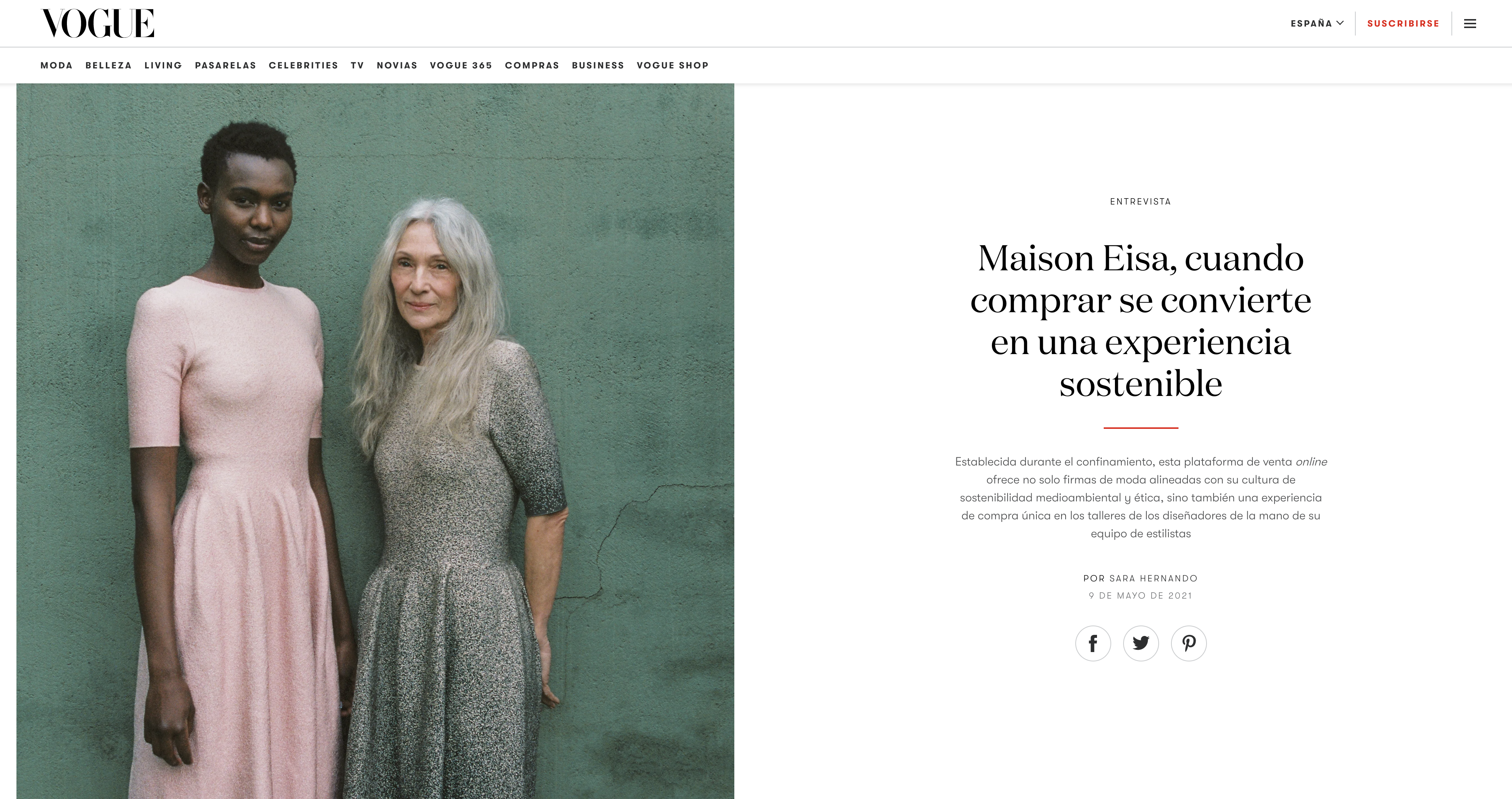
A guide through the most sustainable and eco-friendly fabrics
It is easy to forget where our clothes are made. When we consume, usually the first question that comes to our mind is about the price, and not the process it took to get there. Every piece of clothing has an impact on the environment, but the question is “How much of an impact?”. Many of the cheap, versatile fabrics we like to wear are causing serious damage to animals and the environment. Most of us try to get informed and learn about the production process that goes into making fabrics and where they end up after use, however we know it can be overwhelming to organise all of the information out there.
The following guide aims to present and describe some of the most sustainable and eco-friendly fabrics, and it’s a good introduction to points worth considering next time we’re out shopping.
Organic cottonOrganic cotton is one of the most natural fabrics that we can find. It grows without pesticides and synthetic fertilizers and is processed with no chemicals. Also, organic cotton farming uses 62% less energy and 88% less water than conventional cotton. Organic cotton feels softer, smells cleaner, and is less likely to trigger allergies. The sustainable farming practices used to grow this natural fabric do not pollute groundwater, surface water, soil, or air. In fact, soil quality is actually improved by the production of organic cotton.
 Founded on the fundamental pillar of sustainability and eco-friendliness, Hupit is born with the responsibility of taking care of our planet and reducing the impact on the environment. This jumpsuit is entirely made of organic cotton, with biodegradable buttons and respects their passion for quality and design.
Founded on the fundamental pillar of sustainability and eco-friendliness, Hupit is born with the responsibility of taking care of our planet and reducing the impact on the environment. This jumpsuit is entirely made of organic cotton, with biodegradable buttons and respects their passion for quality and design.
Organic hemp and linen
These two fabrics are very similar in terms of sustainability. They are also both super light and breathable.

Organic hemp is high-yielding, its growth is healthy for the soil (thanks to a process called phytoremediation), and it requires much less water than cotton. Because it has so many benefits and is harder to grow, hemp tends to be slightly more expensive than other sustainable organic fabrics, though we can expect to see more of it in the future.
Organic linen is made from cellulose fibers that are commonly derived from flax plants. This fabric is durable (around 20 years of wear), but it is also incredibly comfortable and flexible. The flax plant does not require much energy or water resources to produce and the entire plant used to make linen, leaving no waste footprint. Linen clothing is naturally biodegradable and recyclable.
Following the same principles as before, Hupit created their beautiful Saona Dress, made out of 100% organic linen. It highlights femininity through its elegant and simple lines, without harming the planet.
Soy silk
Soy silk is a material that is exactly what it sounds like, a silk-like fiber that is made from soybean residue that would otherwise be wasted during its manufacturing. It’s an eco-friendly and cruelty-free alternative to silk and cashmere, which both involve the use of animals in their production. Like real silk, soy silk is cool to the touch, has a lovely drape and is very soft. It is also generally wrinkle-free and also has little to no shrinkage when washed. Since it is a natural fiber, it takes dye very easily.
Lyocell
Lyocell (sometimes just known as TENCEL™, the trademark name of the fabric) is a semi-synthetic, or cellulosic, fabric that has become very popular in the sustainable fashion world. It’s produced from the pulp of eucalyptus trees, which don’t require a lot of water and pesticides. The manufacturing of lyocell is also sustainable, because it requires less water than other fabrics, and occurs in a “closed loop system” where up to 99,5% of dissolving agents can be reused.
Image: Filipa Tencel Dress by Shash is the perfect example of the use of Tencel Lyocell to create a classy and elegant and at the same time sustainable and long-lasting piece of clothing.
Modal
Modal is a processed bio-based textile made from reconstituted cellulose from beech trees. Modal is considered a type of rayon. While rayon may be made of the wood pulp of a number of different trees, modal uses only beech wood. Modal is soft, smooth and known for its top-notch comfort and breathability. Its texture is similar to that of cotton or silk. It is cool to the touch and very absorbent. One of the advantages of modal over cotton is its resistance to shrinkage, a notorious problem with cotton. Modal is also less likely to fade or to form pills as a result of friction.
When we are empowered with knowledge, we can make better choices for us and the planet. While picking a clothing fabric might seem like a small or insignificant choice, it can have a huge impact. Wearing natural fibers is better for us and when we do laundry, we don’t have to worry about thousands of plastic fibers being released into the ocean. It’s a win for everyone.



